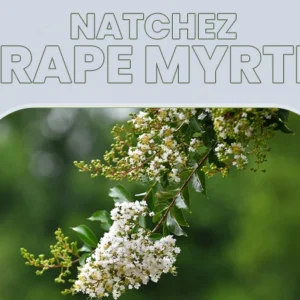Description
Cercis canadensis ‘Rising Sun, commonly known as Rising Sun Redbud, is truly a marvel to witness. A popular choice among gardeners and plant lovers, this species belongs to the legume family. If you are planning to add a captivating tree to your front lawn, the Redbud Sunrise tree might be a perfect choice.
Now, if you wish to add a statement tree to your specimen collection, dive into the article and explore everything about it, from its features and benefits to its taxonomic overview.
Standout Features and Benefits of Rising Sun Redbud
Popular for its colorful foliage, the Rising Sun Redbud tree is an impressive species to add to your backyard. The plant initially bears heart-shaped orange leaves, which gradually turn into shades of red, golden, yellow, and finally turn lime green, projecting a work of art.
The exquisite look of the Rising Sun tree makes it a focal point of attraction in any garden space, and its adaptable nature makes it a perfect choice for novice plant lovers. Moving ahead, let us explore some benefits of the species.
|
|
|
|
The color-changing foliage of the tree has deeper significance. It not only adds an aesthetic touch but also resembles resilience and encourages embracing the cycle of life.
The Ultimate Care Guide for the Redbud Rising Sun Tree
Are you planning to add this spectacular Rising Sun Redbud Tree to your landscape? Before you make a decision, it is essential to understand the ideal growing conditions it requires to flourish.
| Optimal Growing Conditions Required | |
| Hardiness Zone | 4a-9b USDA |
| Sunlight Exposure | Grows best in bright sunlight. Can thrive in partial shade areas also. |
| Water Needs | Requires deep watering during the initial stages; later, they prefer moderate watering only to keep the soil moist. |
| Soil Type | Can tolerate a range of soil types, but prefers slightly acidic and permeable soil. |
| Bloom Season | Early Spring (March and April) |
| Mature Height | 10–12 feet tall |
| Mature Width | 6–8 feet tall |
| Growth Rate | Moderate (1-2 feet per year) |
| Fertilizer | A balanced NPK fertilizer in the ratio 10:10:10 |
With proper care, the Rising Sun Redbud trees can have a lifespan of 20–30 years. The species does not require much pruning, only if the branches or stems are dead or weak.
Taxonomic Summary of the Rising Sun Redbud Tree
If you are a garden enthusiast or a botanist and wish to understand the diversity and evolution of the Rising Sun Redbud, below given is the taxonomic overview of the species for your ease. \
| Scientific Classification of Sunrise Redbud Tree | |
| Kingdom | Plantae |
| Clade | Angiosperms |
| Clade | Eudicots |
| Clade | Rosids |
| Order | Fabales |
| Family | Fabaceae (Legume family) |
| Genus | Cercis |
| Species | Cercis canadensis |
| Cultivar | ‘Rising Sun’ |
Moving ahead, let us check out the reviews and ratings shared by some buyers.
User Reviews and Ratings
Review: Spotted this stunning Rising Sun Eastern Redbud tree at my friend’s garden. Couldn’t stop staring at this beauty.
Rating: ⭐⭐⭐⭐⭐
Review: The leaves of this Sunrise Redbud tree are breathtaking.
Rating: ⭐⭐⭐⭐⭐
Review: The heart-shaped leaves of the tree are truly a sight to behold.
Rating: ⭐⭐⭐⭐⭐
Review: The color-changing foliage is a noteworthy characteristic of the tree.
Rating: ⭐⭐⭐⭐⭐
Where is the best place to plant Rising Sun Redbud trees?
The best place to plant the Redbud Rising Sun is where it can get direct sunlight and the soil is permeable.
Are the leaves of the Sunrise Redbud tree toxic to dogs?
While the leaves of the tree may cause mild gastrointestinal issues, they are not toxic to dogs.
What is the botanical name of the Rising Sun Redbud tree?
The botanical name of the Sunbud tree is Cercis canadensis ‘The Rising Sun’.










